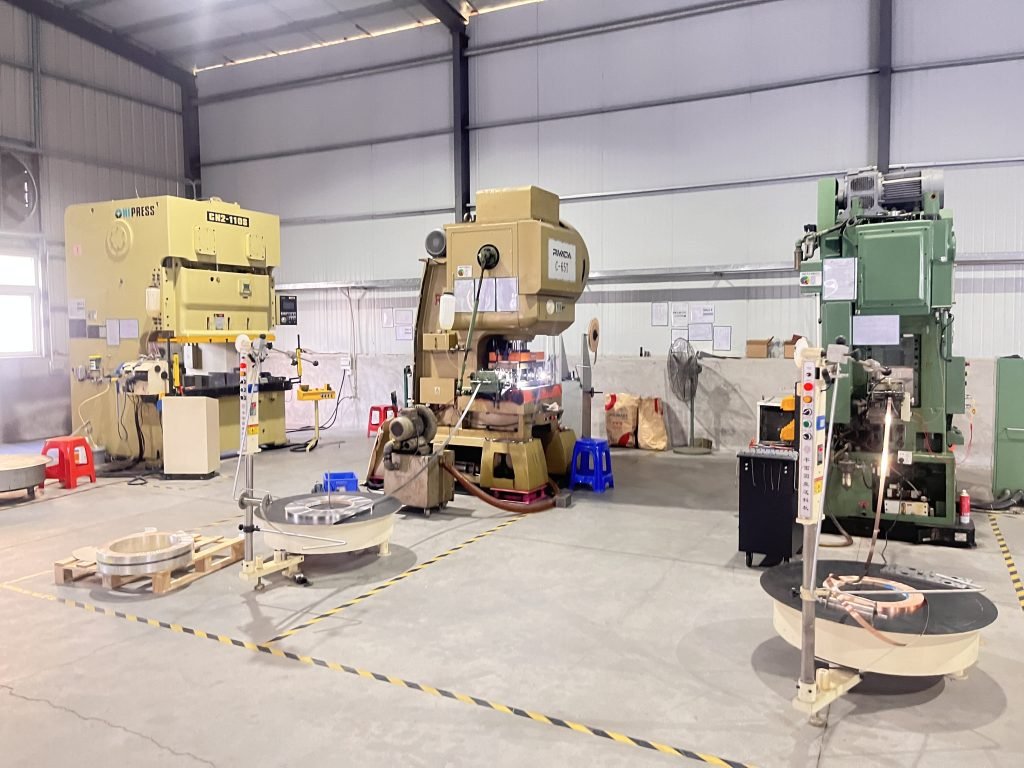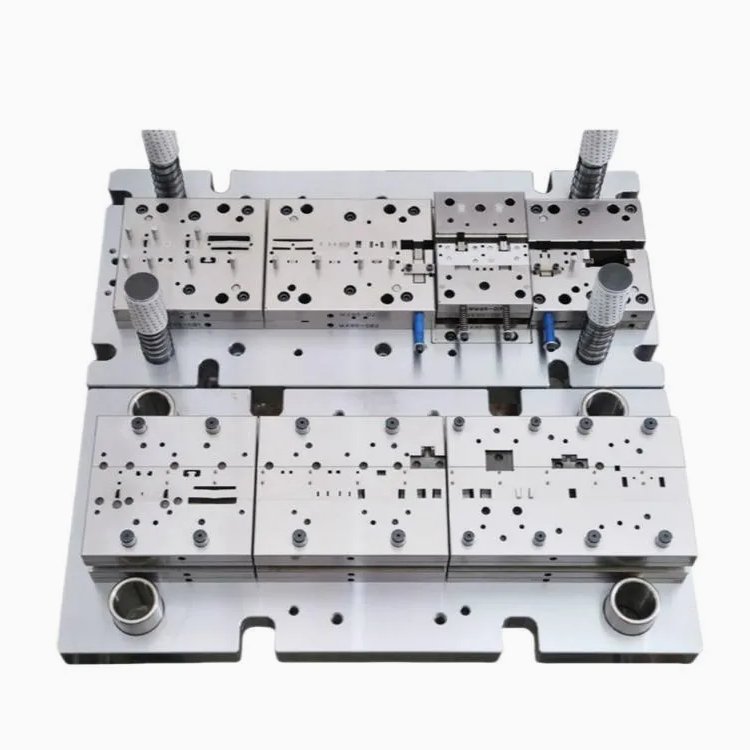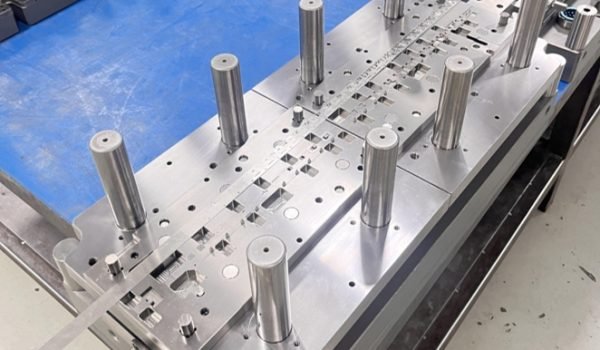In precision manufacturing, the tools and techniques used really matter. Stamping dies play an important role in creating detailed, durable metal parts for industries like medical and automotive. They’re behind so many products we rely on daily.
This guide breaks down what stamping dies are, the different types, and tips to get the most out of them. Whether you’re improving your process or just learning, this guide gives you the know-how to step up your manufacturing game.

What ls a Stamping Die?
Stamping is a method that uses dies on a press to apply pressure at room temperature, shaping materials through separation or plastic deformation to create parts. It relies on stamps and dies, making it a common part-processing technique.
A stamping die includes stamp and die sets, referring to a special type of process equipment used in cold stamping processing to transform metal or non-metal materials into parts or semi-finished products. It is usually called “cold stamper dies “.
Advantages:
- The production efficiency is high, and the operation is convenient and easy to achieve mechanization and automation.
- The quality is stable, and the interchangeability is good.
- It can be processed into parts with large size ranges and complex shapes.
- No chip and scrap is generated; Less material consumption and no other heating equipment are required. Therefore, it is a material-saving and energy-saving processing method – the cost of stamping parts is lower.
Disadvantages:
- It runs fast, but manual operation requires considerable strength.
- The molds used are generally complex. The manufacturing cycle is long and the cost is high.
- Not suitable for small batch production.
- It focuses on classical theory and experience, which are highly required by mold designers and manufacturers.
Top 6 Types of Stamping Dies
Stamping dies include stamping and die cutting, which are special tools used for stamping processing. According to their different structures and functions, they can be divided into the following categories:
Single station dies
Single-station dies are a simple type of mold, suitable for a single processing step, and can only process one workpiece. It has a simple structure, low manufacturing cost, and is suitable for small batch production.
Blanking dies
Blanking is a stamping process that uses a blanking die under the action of a press to separate sheet materials. In a broad sense, blanking is a general term for various separation processes such as punching, blanking, cutting, notching, and cutting. But generally speaking, blanking mainly refers to blanking and punching processes.
Piercing dies
Piercing dies is a typical single-process blanking die. The part is a round material with symmetrical punching. It is usually formed in one step. Common defects include cracking, flanging, burrs, etc. On the blank plate, the waste is separated along the closed contour to obtain the punching die with a hole.
Compound dies
Compound dies are composed of two or more stations and can complete multiple processing steps. It has a complex structure and high flexibility and is suitable for mass production. Common composite molds include composite punching dies, lower punching dies, and cutting dies.
Multi-station dies
Multi-station dies is a high-precision, high-efficiency, and long-life die developed on the basis of ordinary progressive dies. It is an important representative of technology-intensive dies and one of the development directions of punching dies. In addition to punching and blanking, this die can also complete forming processes such as rib pressing, denting, bending, and drawing according to the characteristics of the part structure and the forming properties, and even complete the assembly process in the die.
Transfer dies
Unlike a continuous die, the materials for transfer dies are not connected to each other between the processing stations. Generally, the first station unloads the material, and then the blank is automatically transferred to each processing station in sequence by the automatic shifting device to finally complete the required shape.

Tips on Choosing the Right Stamping Die for Your Project
The above article has introduced you to 6 common stamping dies in detail. So, which one is suitable for your project? According to stamps & dies, the following tips will help you find the best one for your project. You can choose according to the shape of the stamps dies.
Define Project Requirements
You’d better understand your project needs first, including production volume (number of parts) and part complexity (how detailed or intricate they are). For example, use simple dies like single-station or blanking for small batches; choose advanced dies like progressive stamping for large batches. Also, match the die to the part design – basic dies for simple parts, and compound or progressive dies for complex parts.
Consider the Production Volume
When picking a die, think about how many parts you need to make and how complex they are. For small production runs, simple dies like single-station or blanking dies are cheaper and easier to set up. This helps keep costs low. For large production runs, advanced dies like progressive stamping dies are better. They speed up production and lower the cost per part. The type of die you choose depends on how many parts you need to make.
Master the Part Complexity
Simple parts, like flat panels or single-hole parts, work well with basic dies such as blanking or piercing dies. These dies are affordable, precise, and perfect for straightforward projects. Blanking dies cut shapes, while piercing dies create holes, ensuring clean and accurate edges.
For complex parts with detailed shapes, compound or progressive dies are better. Compound dies handle multiple tasks in one step, ideal for precise alignment. Progressive dies are great for high-volume production, performing multiple steps efficiently without losing quality. Choosing the right die ensures project needs are met cost-effectively.
Choose the Appropriate Material
Softer materials like aluminum work well with standard dies, while harder materials like stainless steel require stronger, more durable dies. While thicker materials may need custom dies to handle the extra pressure during stamping. For example,
Tool Steel: Durable and cost-effective for most applications.
Carbide: Extremely hard and wear-resistant, ideal for high-volume or abrasive materials.
Workpiece Material: Consider the hardness, thickness, and type of material being stamped.
Balance Cost and Efficiency
Choose a die that fits your budget while meeting production goals. Simple dies are cheaper for low-volume projects, while advanced dies save costs in high-volume production.
Follow these tips on stamps and die cuts, and you’ll be able to pick the right stamping die for your project, even the right stamping die factory, without a hassle. It’ll help you get the job done accurately and save you money, too.

Ready to Enhance Production Efficiency and Product Quality?
If you want to enhance production efficiency and product quality greatly, Fecision is the best choice for you. It is a superior stamping die factory and focuses on the design and manufacture of high-precision mold parts. Key strengths of Fecision? Let’s have a look!
- Enhanced Production Efficiency & Quality
Fecision specializes in designing and manufacturing high-precision mold parts, significantly improving mold performance, reducing downtime, and ensuring smooth production cycles.
- Fast & Reliable Delivery
Fecision delivers high-quality mold parts economically and efficiently, with the shortest delivery time being just 3 days.
- Advanced Manufacturing Technology
With cutting-edge processes, Fecision achieves ultra-precise tolerances as low as ±0.002mm, meeting the most stringent quality requirements.
- Focus on Precision
As a superior stamping die factory, Fecision’s dedication to high-precision molds ensures superior product quality and performance.
- Cost-Effective Solutions
Fecision combines quality, speed, and precision, offering economical solutions without compromising on performance or delivery timelines.
Ready to enhance production efficiency & product quality? Go for it!




